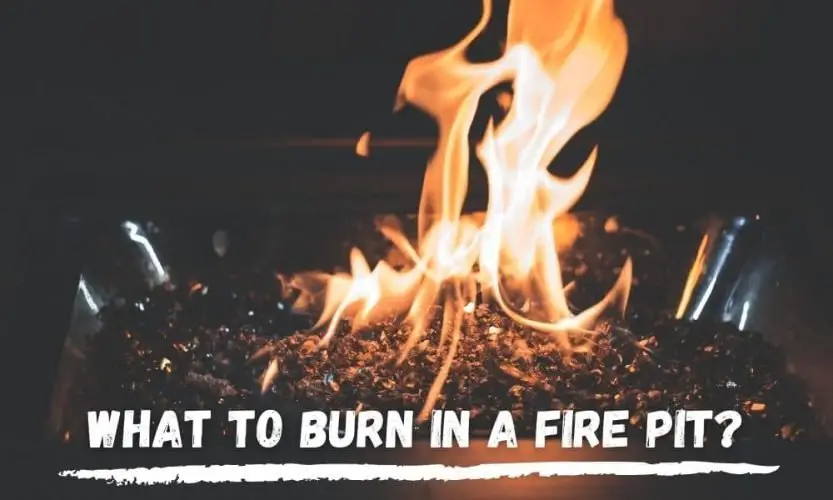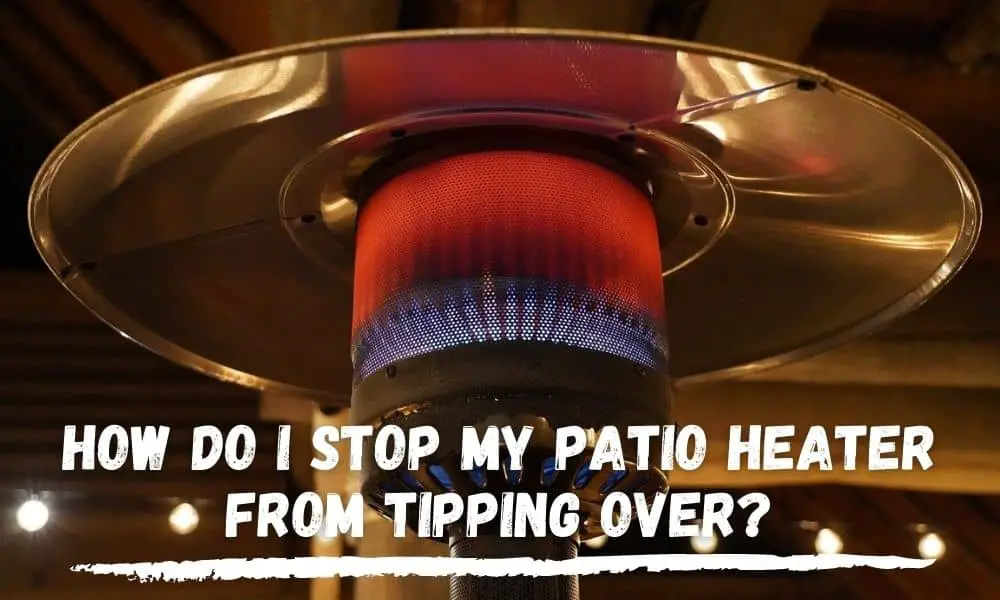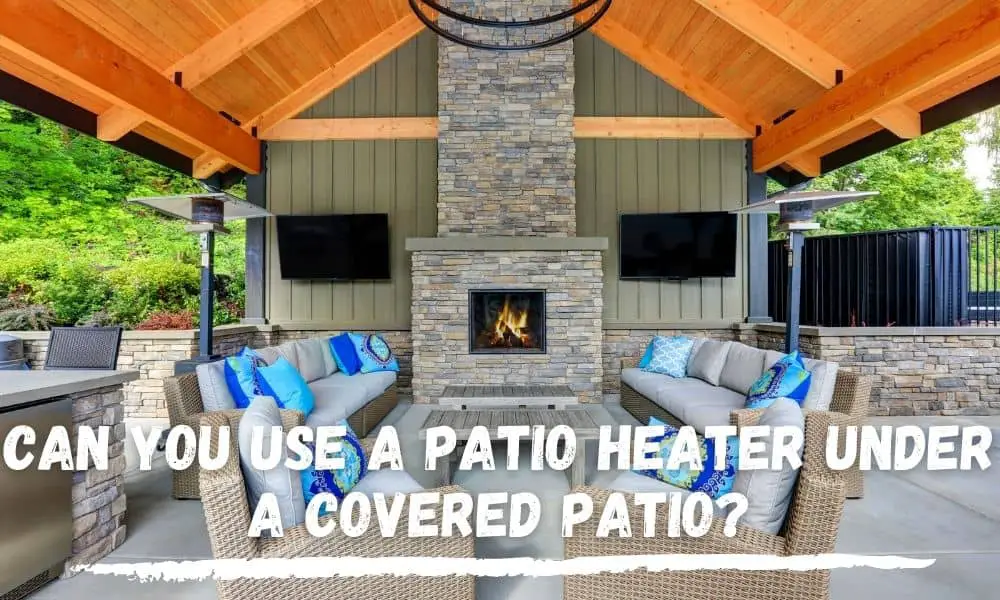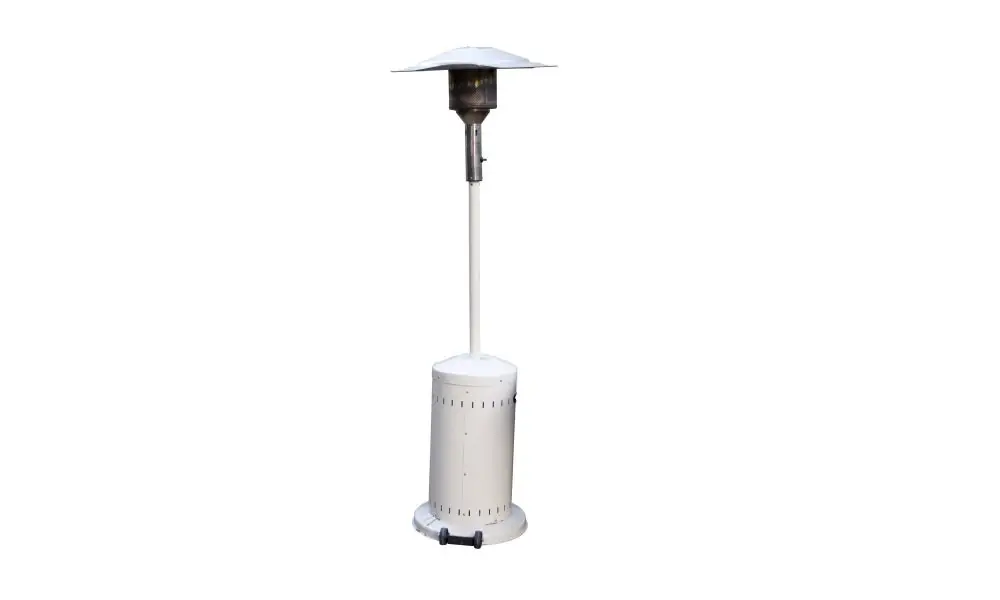If you have a fire pit in your patio, then you know how memorable the experience of chilling with loved ones in backyard fires can be.
Unfortunately, you cannot ignore the misfortunes that come with improper handling of flames. This post covers the dos and don’ts if you wish to avoid unfortunate accidents.

Are you worried about misinformation concerning the best fuel to burn in your fire pit and what to avoid? Well, I bet everyone reading this post has the same question in mind. But of course, there are fuel examples that you should avoid in your fire pit.
Now, let’s dive deeper and solve the parable.
Quick Navigation
What’s the Best Thing to Burn in a Fire Pit?
There are many tips and materials to use here, with the best-being firewood. Examples of wood bricks you can burn include Oak, alder, pinion wood, hickory, cedar, fruitwood like cherry or apple, mesquite, and pecan.
Consider the unique characteristics of the wood items before selecting them for burning. The best materials are old standby wood and not wood logs with a high moisture meter.
However, anyone can choose wood bricks, depending on availability. Pinion wood repels mosquitoes, which makes it excellent firewood for burning fire.
Additionally, firewood pieces like apple, pecan, and cherry woods emit pleasant smells as they burn. Consequently, Oak, mesquite, and hickory generate plenty of heat when burning.
Alder
This is a deciduous hardwood tree common in North America. The wood produces quality charcoal. Make sure it is well-seasoned before inserting it in your fireplace, and never burn it when wet. Wet alder leaves behind plenty of ash and gives off more smoke.
Seasoned alder firewood creates hot fire and burns fast with decent coals. Therefore, use only dry wood brick pieces in your fireplaces.
Pinion Wood
It’s a slow-growing, dense hardwood pine predominating in the Southwest USA. Most people love these trees because they repel mosquitoes. Plus, many are attracted to the smoky pine fragrance, which has a good effect on everyone, including kids.
Cedar
This particular softwood has plenty of natural resin, and people don’t want to burn it in fireplaces. However, the resin is highly flammable and can explode into sparks.
Cedarwood fire gives out high flames but dies quickly and has little coaling properties. Most people mix cedar with other tree branches in small quantities to keep the fire burning longer to give more heat.
Hickory
Hickory is a highly recommended wood material as it burns hotter than many wood chips. It’s a native tree in North America and very strong. If you want a warmer fire pit, then hickory is your ideal firewood choice. You can use it to warm food in fireplaces as it produces minimal wood smoke.
Oak
This is a dense hardwood typical in North American and Asia areas. Many homeowners like oak wood for outdoor fireplace or patio because it has high-energy content and gives your fire pit more heat per load.
Therefore, you enjoy long-lasting coal beds and fires. You can get it from your firewood dealer. Plus, it’s suitable for cooking.
Pecan
Pecan is common in North America, particularly in the United States in Indiana, Texas, Kentucky, and Illinois. As much as it doesn’t produce much heat like Oak, it does give off pleasant vanilla and pecan nut scent as it burns.
Moisture content is low and comes in different kinds of sizes. Always pick wood pellets size that suits your fireplace. Things to consider include firepit design and whether you want to use it for cooking in your backyard.
Mesquite
The wood burns clean with minimal sparks. It gives off hot fires, and the burning wood produces long-lasting coals. The trees are primarily found in North America, northern Mexico, and the southwestern US.
The wood pellets have less smoke when the logs are dry. The idea is to get more heat, which requires better airflow.
Applewood
Although it’s difficult to light and maintain the burning than most wood logs when Applewood burns, it can last for hours. It burns slowly and gives off a smoky, sweet scent.
Cherry Wood
Cherry wood produces moderate heat and gives off a pleasant smell as it burns. However, it’s prone to sparks. Cherry wood logs make a good fire for a backyard gathering.
What Should You Not Burn in a Fire Pit?
For your safety and that of your property, there are materials that you shouldn’t burn in a fire pit. Remember, most fire pits burn wood or natural gas.
This is something to bear in mind when choosing materials to burn. Backyard fire pits are popular in summer as it provides warmth for outdoor entertainment.
Choose what to burn carefully while considering the fire pit design. Anything with toxins or releases a toxic gas should be a no-go as it’s harmful to your health and the environment.
Instead, select traditional wood-burning options. Use only dry firewood. While gathering around the hot fire with friends and family allows you to connect, take precautions to avoid the following items in the fire pit.
Anything Plastic
Plastics release toxic chemical fumes like styrene gas, furans, and dioxins, which are not environment-friendly. Besides, burning plastics gives off foul odors.
Accelerants
The purpose of a fire pit is to allow families and friends to gather, enjoy, and relax. It would be best if you had a fire that gives you a calm approach. Sometimes, it’s tempting to use accelerants to make the fire roar, but accelerants are unpredictable and can result in explosions. Therefore, it’s not worth the risk.
If the fire logs are not roaring, add more dry kindling. As much as accelerants are common and an obvious choice on the menu, don’t go for it because it’s dangerous.
Magazines
Junk paper mails, magazines, and colored wrapping papers appear harmless. As much as they seem like good ideas for an outdoor fire, the kind of ink on their papers are toxins and give off toxic gases when burning.
Choose to recycle junk mail and magazines instead of burning them. The paper quality and components make it unsuitable for burning in a fire pit.
Painted Wood and Particleboard
The paint can be lead-based if the wood is old. The kind of paints used has toxic chemicals that release toxic fumes when burned. Also, particleboard has high-strength adhesives holding it together. Kindling them releases toxic gases that are harmful to your health. Additionally, it gives out more smoke.
Pressure-treated Wood and Greenwood
The wood is treated with various harmful chemicals. Therefore, using the woods in your fire pit can bring more harm than good.
Avoid using green wood as it has plenty of moisture. The wood will hardly burn, and if it does, it produces a lot of smoke, which is uncomfortable for a gathering.
Cardboard
The piece of wood contains toxic chemicals from the prints and paint job. Burning it isn’t eco-friendly and bad for your health. Just like sawdust, it produces a lot of smoke when burning.
This makes it a poor source of fuel for a fire pit. Please don’t use it because you have it in hand. Pick from other viable ideas to get quality and long-lasting fires.
Trash
Trash includes old paper, tint materials, poison ivy, clothing items. Most of these things often produce a lot of smoke, making them unsuitable for patio fire pits.
Can You Burn Coal in a Fire Pit?
Generally, fire pits designed for wood burning also use coal. When talking about coal, note that there is traditional coal and smokeless coal. Fire pits use different fuels, coal being one of them.
Traditional coal produces a lot of black smoke and comes out of the mines, which can irritate and anger those living in your neighborhood. Both coal and wood can fuel your fire pit.
The smokeless alternative is manufactured and contains more naturally occurring components like anthracite. Anthracite has high carbon content and is commonly referred to as hard coal. When burning coal, the flame gives off minimal smoke. Therefore, it’s an ideal choice if you want to maintain clean air.
Charcoal is commonly used in fire pits like the case in a barbecue. You get little smoke. Most homeowners use charcoal and wood to ensure the flames and the residual heat give you long-lasting burning.
How Do You Stop a Fire Pit From Burning?
It’s always exciting sitting around the backyard fire pit with friends and family enjoying roast marshmallows as you honor family tradition. Often, such gatherings create lasting memories that you will endure for a lifetime.
However, there is always a serious threat of wildfires or accidental fires. Consequently, there are better ways to end the fire to ensure that your children, family, and friends are safe. You can do it with the best tips.
The responsible thing to do to prevent a fire disaster is to put off your fire pit when you are done. It’s much better to let the fire go out naturally and only douse it with water if it’s indispensable. Follow the tips below to end your fire the right way. As a rule, always have water nearby or a fire extinguisher as the two complements each other.
Step 1
Let the fire pit burn down until the wood is almost ash. It’s easy to achieve this by not adding more wood an hour before time. The fire will naturally burn down, which makes your job easier. Also, you can put out the remaining chunks using a stick to accelerate the process.
Step 2
Spread out your remaining coals or wood using a tick or shovel. Doing this extinguishes the fire much quicker as the wood is not touching, and the fire has less heat. Watch out for red embers, especially from the large chunks. In most cases, the larger lumps appear cold on the outside but still hold substantial heat inside.
Step 3
Douse your fire with water. Use a bucket and hold it several feet above your fire to prevent scalding from resulting in hot steam. There will be a sizzling sound from the remaining embers. Cover all ashes in water and not just the red parts. Continue pouring water until the sizzling sound ceases completely.
Step 4
Use a stick to stir the fire pit to ensure all fire elements are extinguished and completely soaked in water. Also, mix the remaining embers and chunks of wood. Plus, check the surrounding places for embers and add more water.
Step 5
Check the surroundings for any ashes or wood blown away. Before you leave, recheck the area for sparks or tiny embers as they can start a fire under the right conditions.
Step 6
Check the temperature of the fire pit area. Touch it without your hands to check if there is any heat. Ensure the surrounding area is cool and, if not, use a stick to stir it and pour some water. Do this until you are convinced the fire is completely out.
Once the ashes are cold, scoop them up and dispose of them to ensure the fire pit is dry and clean. You can use the ash in your compost for nutrient-rich soil. Leaving the ash there can cause the fire pit to rust.
In case you have no water, use dirt. Follow the same steps as you do with water and mix the embers until your fire pit is cold completely.
Start this process when you commence packing your stuff. By the time you finish packing, you have completed much of the work. It’s dangerous to do this as a last-minute undertaking, as you may not have ample time to do it properly. Besides, you can accidentally leave hot embers around.
CAUTION: A 1000 degree fire should not be cooled suddenly as it compromises the fire pit’s structural integrity. Sudden change in temperature causes damage to the built materials of your fire pit. Therefore, follow the tips highlighted above and ensure the process is efficient and more natural.
Final Thoughts
Using fire pits is fun if you do it safely and correctly, regardless of whether it’s coal or wood-burning. The tips above ensure you exercise due diligence to keep yourself and everyone else safe.
Arm yourself with preventive measures and provide you extinguish the fire completely when finished. You might find your neighbors having the same setup though designs may vary. Select appropriate fire starter wood for burning.
To learn more, go to our website or use our contact form to send us an email. Most people love email as they receive comprehensive information. The site has a privacy policy that protects your email to ensure no one misuses the email. The privacy policy is vital to protect your identity as all rights are reserved.




